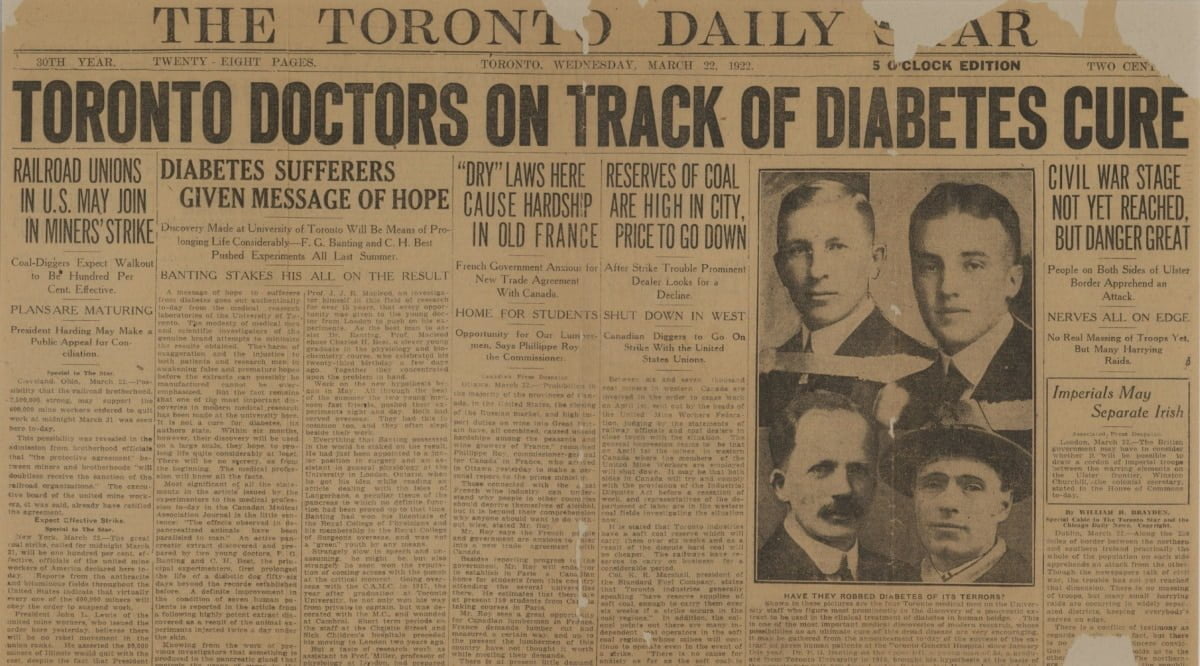The Discovery of Insulin
The discovery of insulin is one of the most significant milestones in the field of medicine. Before its introduction, they considered diabetes a death sentence. Since synthetic medications like insulin gained accessibility, treatment and management of diabetes witnessed a colossal breakthrough.
What is the history behind the discovery of diabetes? What were some of the progress of diabetes treatment since the discovery of insulin today? Let’s delve more into the timeline of insulin discovery and its significant improvement in recent years.
November 7, 1920
The scope of an insulin-producing pancreas, specifically its tissues, was identified during this time. Scientists discovered that type 1 diabetes destroys the cells inside the tissues. This idea paved the way for researching specific treatments to fight against diabetes.
Scientists made a series of attempts during this time to extract insulin from the pancreas. However, these attempts were unsuccessful. Only in October of 1921 did the discovery of insulin unfold because of Frederick Banting, a Canadian surgeon.
In his study concerning insulin, Banting came across an article suggesting that cells play a more significant role in extracting insulin than tissues. He initially theorized that breaking down the pancreas in a specific way would keep the cells intact and attempts to extract insulin successfully could be realized.
May 17, 1921
It was at this time that the experiments started. John Macleod, a top professor at the University of Toronto, provided Frederick Banting with the equipment and the lab he needed to execute his experiments. A research student also joined the group, Charles Best, who specializes in blood glucose level testing.
The initial research started with removing insulin from a dog’s pancreas. The method involved tying off the animal’s pancreatic duct to prevent other substances from harming the insulin.
November 10, 1921
On November 10, 1921, the team saw a successful result in their experiment when they successfully treated a diabetic dog. This success laid the foundation for several positive research and experiments for the future.
December 12, 1921
After their first successful experiments, James Collip, a biochemist, joined the group Collip worked on purifying the extracted insulin. He proposed that the process of insulin purification will make the hormone safe and usable for humans.
January 11, 1922
In early 1922, a breakthrough occurred concerning insulin treatment. Leonard Thompson, a 14-year-old diabetic boy dying from type 1 diabetes, became the first recipient of purified insulin injections for humans. After administering the insulin, Leonard’s blood sugar levels become stable and normal within 24 hours.
The news about this successful experiment went globally viral through the news media. In 1923, Banting and Macleod received the Nobel Prize in Medicine.
May 3, 1922
Mid-1922, Macleod presented the discovery of insulin to a broad audience in the international medical community. The team received a standing ovation after announcing this breakthrough. This was also the first time that the word “insulin” was used.
October 15, 1923
After the first successful human treatment, the demand for the medication skyrocketed. In late 1923, pharmaceutical companies capitalized on insulin’s global market and started manufacturing them on a mass scale.
Eli Lilly, an American pharmaceutical company headquartered in Indianapolis, Indiana, became the first manufacturer to execute a large-scale insulin production.
1923 – Present
After Eli Lilly’s initiative to produce insulin supply for the masses, several manufacturers followed the lead. A few decades later, Novo Nordisk, a Danish multinational pharmaceutical company headquartered in Bagsværd, Denmark, developed a variety of slow-acting insulins.
All manufacturers derived insulin from cattle and pigs before the discovery of genetically engineered insulin. Many patients reported cases of allergic reactions from animal-derived insulin during this period. In response, Eli Lily became the first company to commercially sell biosynthetic insulin, which is available under the brand name Humulin. Today, different insulins are available, such as long-acting, intermediate-acting, short-acting, and rapid-acting. These insulin types are available as pens, pumps, and syringes. From its first introduction in the year 1921 until today, insulin treatment has come a long way, marked by colossal breakthrough upgrades. Insulin is still the reigning king of diabetes management, trusted by 75 million people worldwide.


